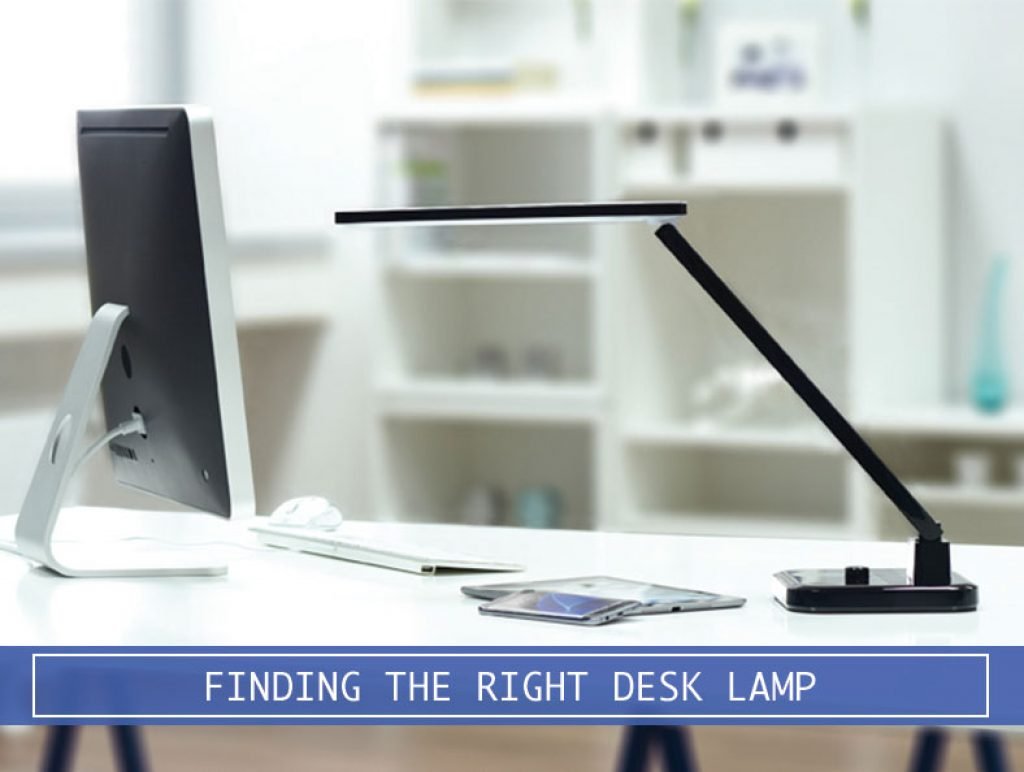Whether you are a professional or a student, maintaining a good workplace for your desk at home or at the office is key to productive work. A comfortable chair and a quiet environment maybe some of the essential components of a workplace, yet for night owls, a desk lamp plays a major role in gauging their productivity.
Whether you are working on piles of paper or operating a laptop, a good desk lamp would always come in handy. It is not only due to productivity at work that you need to have yourself a desk lamp, but using a good source of light can actually prevent your eyes from straining.
It should be noted that the eyes would dilate in a darker environment to allow more light to enter the lens and on to the cornea. This allows you to see even when there is no direct source of light. However, when working without a good source of light, your eyes will only be strained, causing blurred vision, scorching pain in the eyes, and headache. Furthermore, research shows that working in a dark environment may eventually cause myopia or short-sightedness.
In order to prevent such health issues, it is essential to provide yourself with the right kind of desk lamp. For this article, we have gathered several tips on how to find the right desk lamp. We have also provided ways on how to prevent your eyes from straining.
Table of Contents
What to look for in a desk lamp
Whether you are in need of a desk lamp in order to help you work during the wee hours of the night, or you just need one as a source of light when reading, a good desk lamp should possess the following functions.
Brightness of the Lamp
Brightness refers to the quality of light given out by a source. The wattage of the source directly affects the brightness of the light (measured by lux). The greater the wattage, the higher the lux of the lamp. Usually, the wattage of the desk lamp differs from the situation where light is needed.
For children who are 5 to 12 years old, a 3-5-watt LED light is recommended. For those who are 13-24 years old, a LED light with a wattage of less than or equal to 5 watts is recommended. For home office tasks, LED lights with 5-10 watts are recommended. While a 3-watt LED light is recommended for those who are reading in bed.
Lighting Type
Desk lamps come in a variety of lighting type. Commonly used light bulbs in desk lamps include incandescent, halogen, and fluorescent. Yet the most common among these are LED (light-emitting diode) which offers the brightest white light among the other lighting types.
Majority of the desk lamps now make use of LED lights. Being energy efficient, they are able to last longer than the other types of light bulbs. They also tend to have the most controlled beams of light, since many LED-lit desk lamps allow you to control its level of brightness based on your preference. Unlike incandescent bulbs, LED light does not heat up.
Color Temperature
Color temperature describes the warmth or coolness of white light. Measured in Kelvin (K), color temperature varies from very warm white light (2700K to 3000K) to bluish-white light (5,000K to 6,500K). Warm color temperature creates a soothing atmosphere, while cooler color temperature helps stimulate the brain, making you more productive. Furthermore, the color temperature may help ease the straining of the eyes.
Position of the Fixture
The desk lamp should be positioned above your head and out of your eyes. The source of light should not directly hit your eyes. In positioning the lamp, you should also be well aware of the possibility of producing glare especially on a glass desk, or on your laptops.
Style of the Lamp
This criterion is based entirely on the preference of the user. Some lamps are traditionally designed to stand on a fixed structure. Other, more modern, lamps have adjustable elbows which may be bent, or flexed.
How to prevent eye strain
Basically, a good source of light can help reduce the risk of eye-straining. A good desk lamp should provide the right amount of brightness so that the user may strive for productive against a well-balanced source of light.
In order to prevent the straining of eyes brought about by poor lighting, one should aim to provide a sufficient source of light by considering the aforementioned criteria in selecting an efficient desk lamp. The lux of the desk lamp should apply to your present situation. Using a desk lamp with a lower lux will only strain your eyes.
Furthermore, the light should be positioned in such a way that it does not obscure shadows. Furthermore, when positioning the light, it should be made sure that glares and extreme contrasts should be limited, since they may also hurt the eyes.
The right color temperature should also be considered. While the warm color temperature may provide a nice ambiance, its lux may be lower than usual, making it more difficult for the eyes to work. Cool color temperature is recommended.
There are a variety of factors to consider when maintaining a workplace. One of the most important factors is a desk lamp. Not only does it help you read and understand what you are working on, but an efficient desk lamp also helps prevent eye strain. Hence, it is essential to consider several criteria in order to select the right light source to avoid irritation of the eyes.
References:
- https://www.businessinsider.com/best-desk-lamp/#the-best-traditional-desk-lamp-2
- https://www.lightology.com/index.php?module=how_to&sub=desk_task_lighting
- https://www.themine.com/articles/how-to-choose-the-best-light-for-reading_a6279.html
- https://www.ccohs.ca/oshanswers/ergonomics/office/eye_discomfort.html
